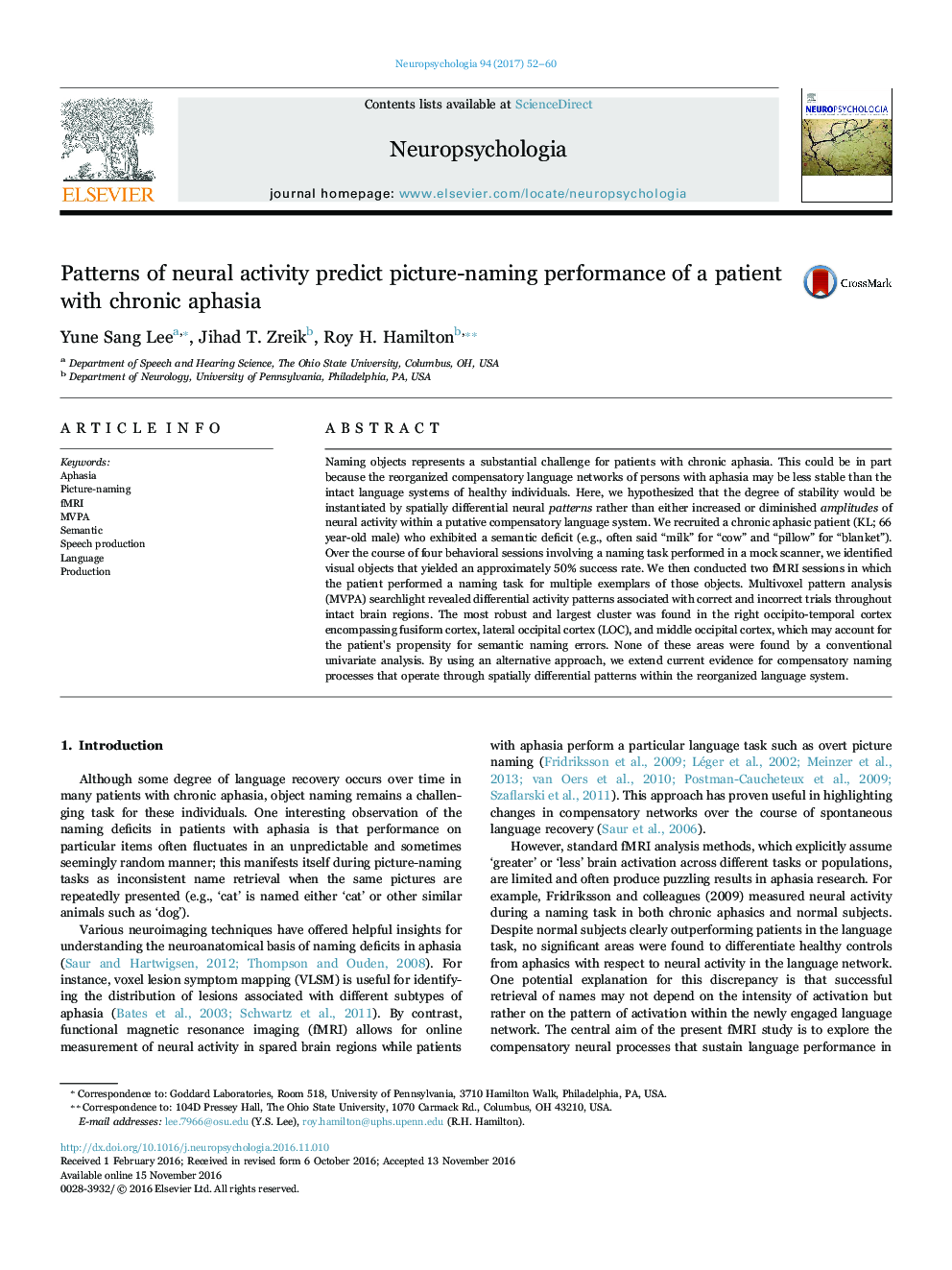| کد مقاله | کد نشریه | سال انتشار | مقاله انگلیسی | نسخه تمام متن |
|---|---|---|---|---|
| 5045253 | 1475561 | 2017 | 9 صفحه PDF | دانلود رایگان |
- MVPA searchlights revealed regional patterns of neural activity associated with compensatory naming processing in aphasia, which was not detected by conventional univariate analyses.
- The largest and most robust cluster was found in right occipitotemporal cortex, which is mirrored by predominant semantic error rates.
- This is one of the first attempts of employing machine-learning techniques to predict behavioral naming performance using on-line fMRI data in aphasia studies.
Naming objects represents a substantial challenge for patients with chronic aphasia. This could be in part because the reorganized compensatory language networks of persons with aphasia may be less stable than the intact language systems of healthy individuals. Here, we hypothesized that the degree of stability would be instantiated by spatially differential neural patterns rather than either increased or diminished amplitudes of neural activity within a putative compensatory language system. We recruited a chronic aphasic patient (KL; 66 year-old male) who exhibited a semantic deficit (e.g., often said “milk” for “cow” and “pillow” for “blanket”). Over the course of four behavioral sessions involving a naming task performed in a mock scanner, we identified visual objects that yielded an approximately 50% success rate. We then conducted two fMRI sessions in which the patient performed a naming task for multiple exemplars of those objects. Multivoxel pattern analysis (MVPA) searchlight revealed differential activity patterns associated with correct and incorrect trials throughout intact brain regions. The most robust and largest cluster was found in the right occipito-temporal cortex encompassing fusiform cortex, lateral occipital cortex (LOC), and middle occipital cortex, which may account for the patient's propensity for semantic naming errors. None of these areas were found by a conventional univariate analysis. By using an alternative approach, we extend current evidence for compensatory naming processes that operate through spatially differential patterns within the reorganized language system.
Journal: Neuropsychologia - Volume 94, 8 January 2017, Pages 52-60
